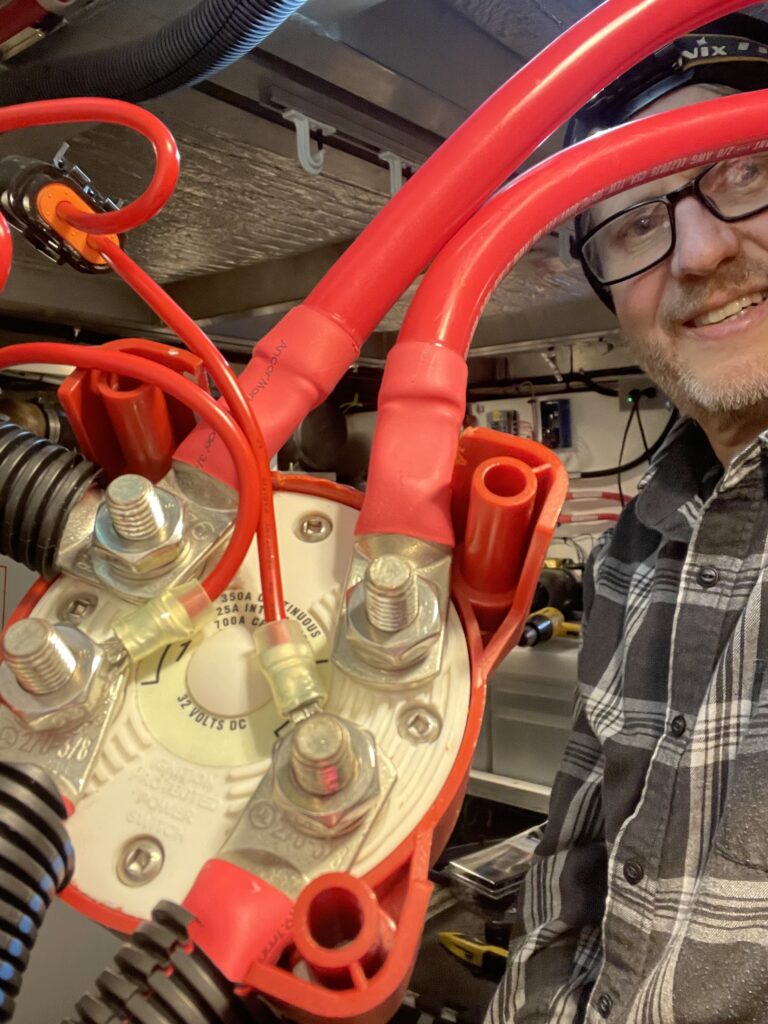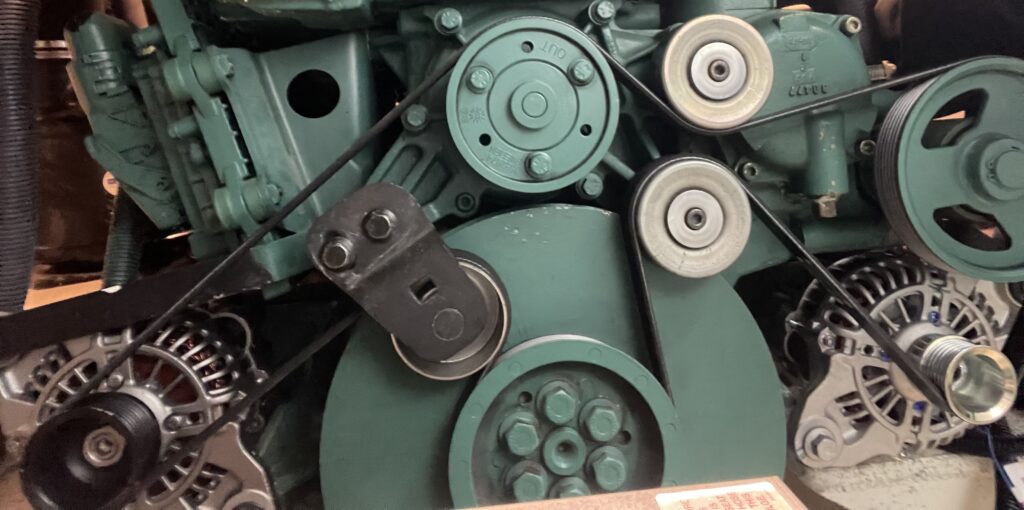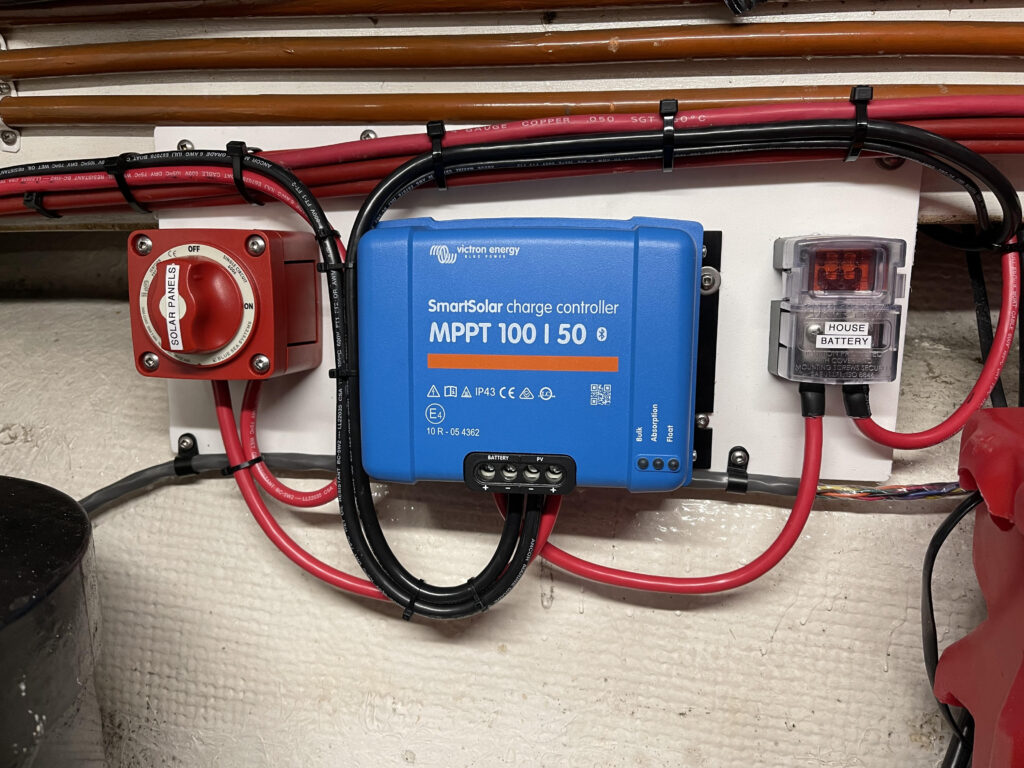
I continue to be focused on upgrading and refining my design of battery systems.
Right now lithium batteries are very appealing but maybe you’re not quite ready.
You may want to wait just a little bit longer, since the price is coming down and improvements are being made, on what seems like an almost monthly basis.
If you are ready to jump all in with a new lithium battery system for your boat then I would say: go for it! I have been not only installing systems, I have also been consulting for customers who are installing new lithium battery systems themselves. I help with the obvious things like safe fusing, external regulation of alternators, navigating battery monitoring systems. Also some of the things that might not be obvious at first like back up procedures for batteries that can literally “shut off” zero volts, open circuit. What then? I help with making a plan to avoid the danger of combining a lithium battery with standard batteries that are two far apart in state of charge to be safely put into parallel. It is often the “what if ” scenarios that I find challenging to solve, but also enjoyable when I do find that elegant and simple solution.
When AGM batteries are still the right choice, I take a few simple design steps to make sure the work I do will make the system lithium compatible for the next round. And I have found that the features that make the system lithium compatible work great for an AGM system also.
Some examples are:
1) Use the engine alternators for the start batteries and add a separate new alternator for the house bank. Externally regulate the new alternator.
2) Now that you have a dedicated house bank alternator and start battery alternator(s) eliminate charging relays and battery isolators completely from your system.
3) If possible use high quality multi purpose batteries for the house bank. (This could be a whole other discussion), but for our purposes here I am preparing for a lithium bank in the future that will be able to run my thrusters, windlass, davit and provide high DC amp discharge rates from the batteries for my inverter, and a fast charging rate.
4) Wire each new battery in the new house bank to a dedicated positive and negative buss bar with wires that are the exact same length.
5) Put in a heavy duty DC negative shunt between the battery DC negative buss bar and the system DC negative buss bar. Make it all heavy enough to carry your thruster, davit, and windlass loads. This is for your battery monitor.
I hope this offers insight into what I prioritize in a new battery system. Notice I did not mention a new inverter/ charger. It is tempting to run out and buy the latest inverter and think you are going to install that new box on the bulkhead and instantly have a lithium compatible system. Not true. It’s important, but it’s way down the list. Any good battery system requires careful thought put into the distribution, switching, fusing, and how charging sources are going to be integrated.



